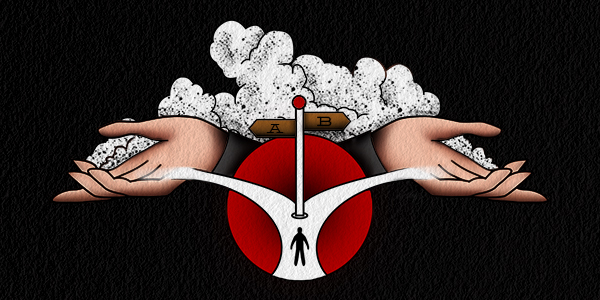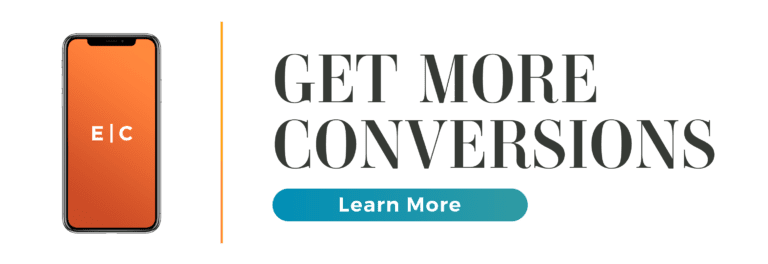Understanding Your Customer’s Journey: The Importance of Seeing Them as the Hero
“People trust those who understand them, and they trust brands that understand them too.”
― Donald Miller, Building a StoryBrand: Clarify Your Message So Customers Will Listen
One of the biggest marketing sins you can commit? Not understanding your customer.
Often marketers and business owners fall victim to their own conjecture, their experience with other companies or in other industries can cloud their judgement when it comes to strategy and messaging. It becomes easy to say “I’ve met this audience before” and create a strategy around familiarity and comfort instead of data and research.
And in some point in marketing history, that worked. It truly did. People were happy to see clever taglines and colorful characters created in a homogeneous vacuum that served pink for girls, blue for boys, and jazz jingles for the older folks. But we don’t live in that world anymore.
Today we’re going to take a look at why it is so important (emphasis on SO IMPORTANT, you guys) to not only understand your customer but to see their struggle and act as a guide to help them conquer their challenges and help them become the hero of their own story.
Your Customer is Nonbinary
non·bi·na·ry
/ˌnänˈbīnərē/
adjective
1. not relating to, composed of, or involving just two things.
Nonbinary is a phrase you hear a lot these days and often in the context of sexual identity. Though it may be a provocative h2, in this context I’m using it to explain that your customer is more than a couple of things. They’re more than their household income and their marital status, they’re more than their job title and company size, they may in fact be neither male nor female.
The point is that understanding your audience means you know where they work and where they live, what podcasts they like, what their affinities are, what brands they follow and what brands they buy (they may not be the same thing!), and, most importantly: what they need and how you can provide for them.
Customers are Going on a Journey With or Without You
You’ve heard of the funnel, the path, and even (said sarcastically) the flywheel. But I’ve always thought of a customer’s journey in more cinematic terms and so should you.
The customer journey is based on the hero’s journey, a narrative structure chronicled by Joseph Campbell in 1949. This journey is also referred to as the monomyth (not necessary to know for this post, but a fun fact to pull out at a party!). It’s arguably the most common narrative structure used throughout the world in all forms of storytelling: books, movies, and, these days, marketing.
Essentially, the Hero is the customer, the Guide is your business, and the ultimate challenge or goal is the need that can be met via the use of your product or service. Knowing that every customer goes on a journey before they make a purchasing decision will allow you to position yourself as a Guide and address all of their needs at every stage of their journey from education to conversion to brand ambassadorship.
Campbell’s monomyth contains 12 steps but that’s a LOT so we’re not really going to cover them here. What we are going to cover are 3 things that relate to our customer’s journey so you can help them achieve the goal they need/want to achieve.
Tracing the Customer’s Journey
Making a commitment to understanding your customer’s journey isn’t just about looking at landing pages on your site or knowing the different types of referral traffic: it’s about understanding their needs, how you can meet them, and how you can make their journey from education to conversion as simple, easy, and delightful as possible.
Just a quick check-in here: the reason we want to do that is because when we market in this way, people buy things from us. At the end of the day, our main goal is conversions.
Ok, back to learning all of the things…
Here are a few things to consider when you’re thinking about how to improve (or in some cases, build) your customer’s journey.
1. Identify their touchpoints
A touchpoint is every instance during which a customer comes into contact with your brand before, during, and after they make a purchase. This means that touchpoints can include all of your social media pages, your paid ads, your email marketing, your blog, and even online reviews.
Not sure how to get there? Here are a few questions to ask that can help get you started:
- How many touchpoints does our typical customer make before converting?
- Are we focusing time and attention on touchpoints that aren’t converting?
- What are our top-performing touchpoints and how can we make them even better?
- Is there an easy and logical path for our customers to take from start to finish or is it a windy, convoluted process?
This process takes knowledge, analysis, and time. It’s not easy but it’s crucial to understand your customer’s touchpoints so you can optimize them and make the buying process as easy as possible.
2. Identify potential roadblocks
So, you know you get a decent amount of traffic to your site but your conversion rates are still low to medium. Why?
Once you know where your touchpoints are, you can identify whether there are any roadblocks preventing customers from moving forward.
Some roadblock examples:
- A high bounce rate on a specific page may signify that there’s either a technical issue or a lack of relevant or engaging content that satisfies the customer’s needs.
- Also, don’t say “But what about landing pages?” to me. Landing pages with forms fills should have a thank you option that points users to other pages on the site with similar content so they don’t bounce right away.
- A high cart abandonment rate may mean that your shipping costs are too high or that the cart process is too long.
- If people are landing on your homepage and not going to any other page, it may mean your messaging is unclear to them.
- Form fills not being filled out may mean they need new CTAs or updated placement on the page or you’re simply asking for too much information.
Once you identify your customer’s roadblocks, you can address them starting with the biggest red flags, moving down to the minor inconveniences.
3. Optimize your customer’s journey
Once you understand your touchpoints and have removed the roadblocks, the path should be clear for our hero. The most interesting thing (and, for some, the most frustrating thing) about marketing is that it is never done. Like…never. Audiences change, algorithms change, vocabulary changes. As a Guide, it’s up to us to make sure we’re always there to support our hero’s ever-evolving needs and provide them with the tools they need to win their ever-evolving battles.
Here are a few examples of how you can help optimize your customer journey:
- Make sure your Call-to-Action is really easy to understand. Don’t make your customer jump through hoops to get your product or service.
- Make sure you have all of the information they need to make an informed decision about their purchase. Product comparison, customer testimonials, white papers, etc. are all valuable assets you can create to help make sure your customer feels that they’re on the right path.
- Make it all about them. Sometimes it can be hard not to say “We’re the best because…” but marketing doesn’t work that way anymore. Your customers have access to you, your competitors and world wide web of information to help them make their decision. What will make you stand out is your ability to speak directly to your customer. It’s not about what you do, it’s about how they can benefit from what you do.
Whatever you do, make sure it’s making your customer’s journey easier for them.
The TL;DR On Your Customer’s Journey
At the end of the day, your customers want just a few, simple things:
- They want to know that you know who they are.
- They want to know how your product can help them achieve a goal.
- They want to know they can trust you.
It’s fairly simple, and our role as Guides, means we’re here specifically to give our heroes the tools they need to win. Whether that’s a sturdy pair of shoes, the proper medical treatment, or the best legal advice, all industries and businesses that can solve a problem for their customers can follow these steps and see improvement with their conversion rates.
-FINAL(01-00)-White&Blue-01.svg)





